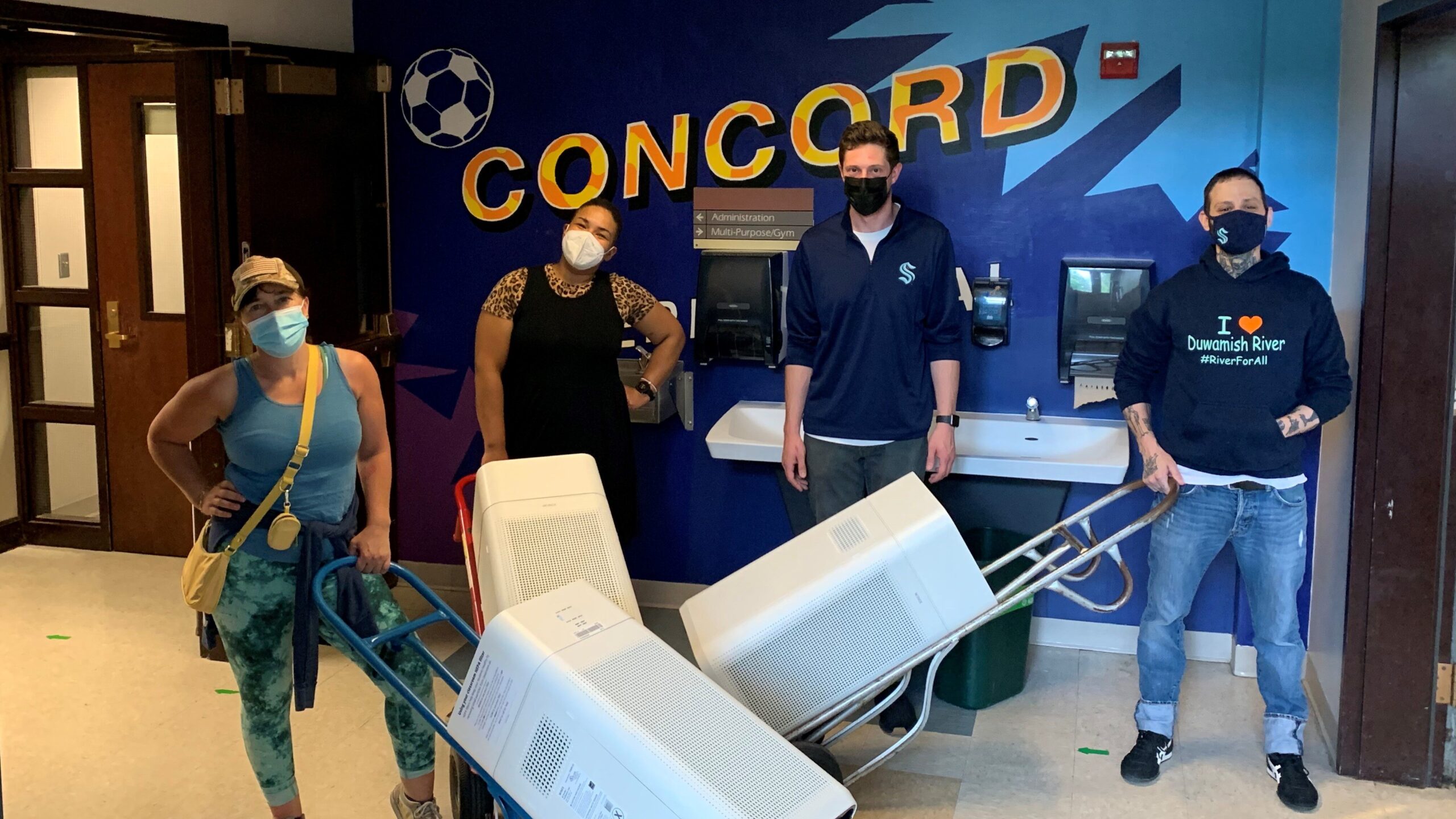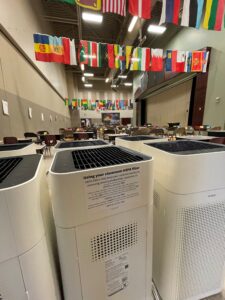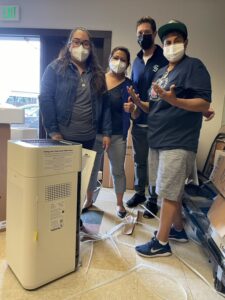
Per its environmental justice pillar, One Roof Foundation and nonprofit DRCC team up to place top-grade HEPA air filters in every classroom at Concord Elementary in South Park — by Bob Condor
Seattle is a city of lively neighborhoods for meeting friends, becoming a family and feeling at home. South Park is one such example, but falls short on a vital quality-of-life factor. Its 98108 zip code stands as a segment of the greater Seattle area with the worst daily air pollution compared to all other neighborhoods.
South Park and the Duwamish Valley community (especially neighboring Beacon Hill and Georgetown) are exposed to higher air pollution from industries, trucks (lots of trucks), cars, feed lots and more. The consistent poor level of air quality is undeniable – we discuss below – but One Roof Foundation is joining the nonprofit Duwamish River Community Coalition (DRCC) in the effort to help.
To that end, the DRCC and One Roof, the philanthropic arm of the Seattle Kraken and Climate Pledge Arena, purchased and installed 24 large-room air purifiers in classrooms, multi-purpose rooms and the teacher’s lounge at Concord Elementary School (pre-K through fifth grade) in South Park.
The Winix Dual 4-Stage true HEPA large-room air purifiers were installed last June by a team of Concord PTA and Kraken volunteers. The purifiers, which cleans room air up to 1,500 square feet in a half-hour or less, hummed all summer as the school is used year-round for fall to spring classes and summertime camps and programs.
Installing the air purifiers was inspired by a 2021 University of Washington Department of Environmental & Occupational Health Sciences study showing “ultrafine air pollution particles from road and aircraft traffic infiltrate schools around Seattle-Tacoma International Airport, with potential negative effects on health and student academic performance.”
Researchers tested the use of HEPA air purifiers in school classrooms and found it significantly improved classroom air quality, with pollutions particles dropping to one-tenth of outdoor levels.
Air filters are fundamentally a fan-and-filter system to reduce airborne allergens, vehicle exhaust, mold, bacterial, viruses, wildfire smoke and other sources. The purifiers at Concord are top-of-line engineered models.
“We were very accepting of this proposal and donation from DRCC and the One Roof Foundation,” said Nerissa Hellberg, assistant principal at Concord Elementary. “We had some air purifiers given to us through the public schools to get us through the pandemic. But there was no long-term plan.”


Hellberg noted that the Kraken provided more filters than originally were offered when they saw the need: “We focused on the classrooms, then realized we could use more. Plus, the filter lasts one year, until this June, and we received enough extra filters to get us through next year too.”
South Park and Georgetown are both disproportionately affected by diesel exhaust pollution because of the close proximity to trucking routes that connect the Port of Seattle to local freeways. Trucks routinely travel on neighborhoods streets lined with houses, schools and parks.
As the cumulative health impact analysis published by the DRCC and its technical advisory group shows, South Park, Georgetown and Beacon Hill residents face “environmental exposures identified that include the highest concentration of diesel and benzene particles in the air in the entire city.”
The study found the diesel particulates, increase the likelihood that residents will develop asthma. Research shows children in South Park and Georgetown were hospitalized more frequently due to asthma conditions.
Plus, the Duwamish Valley “contains the most polluted waste sites and the Toxic Emissions Inventory sites included in Seattle neighborhoods.” Data collected on the South Park and Georgetown neighborhoods projects resident life expectancy to be eight years shorter than the Seattle average and 13 years less than the comparatively wealthier neighborhood of Laurelhurst in North Seattle as one example.
It all adds up to a type of environmental injustice the One Roof Foundation is determined to eliminate as part of its charter. Along with pillars to provide wide access to hockey/skating and end youth homelessness, One Roof’s third pillar aims at “elevating the voices of and supporting communities disproportionately impacted by climate change.”
Low-income and predominantly BIPOC neighborhoods in the Pacific Northwest face a higher degree of environmental risk factors related to not only poor air quality but also polluted waterways and waste sites. Unlike, say, smoke from wildfires, Hellberg, who has worked at Concord Elementary for four school years, says the South Park air pollution is less noticeable to the nose and eyes yet it is constant.
“Our school is in a location where air purification is needed every year and all year, not just during the [COVID-19] pandemic or wildfire season,” said Hellberg. “It comes with the geography of the school and history of the neighborhood. Air purification is absolutely necessary to the health of everybody working at the school and especially the small children who attend classes six hours every day, five days a week.”